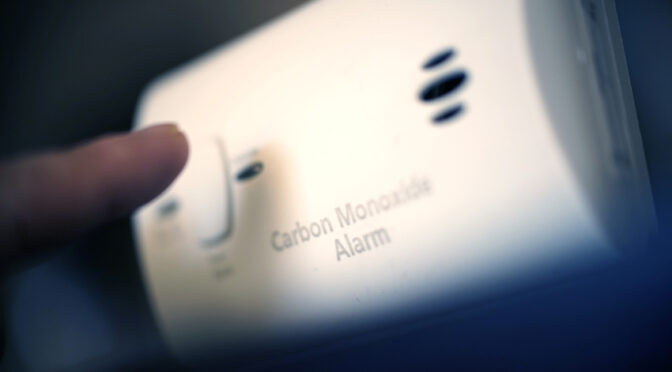Protecting Your Home and Health
April 12, 2021
A lot goes into making sure your home is safe. Knowing what to look for is just as important as understanding that some dangers can be hiding in plain sight. Keep reading to learn more about protecting your home and health from carbon monoxide exposure and poisoning.
What is Carbon Monoxide?
Carbon monoxide (CO) is produced by burning wood, charcoal, propane, or other fuel sources. This gas is virtually undetectable, as it has no color, taste, or odor. Most CO incidents happen during the cold winter months, when homeowners turn to home heating systems for warmth.
CO exposure can cause damage to vital organs, including the brain and heart. Or it can be fatal. The Centers for Disease Control and Prevention reports that 430 Americans die each year as the result of accidental CO poisoning. Additionally, about 50,000 people end up in emergency rooms every year for treatment.
Know the Symptoms
Home appliances that burn natural gas, propane, wood, coal, or oil have the capacity to produce CO. As such, it’s important to have your home’s equipment and your motor vehicle inspected on a regular basis to ensure they’re functioning properly.
Signs that you or someone in your home may have been exposed to CO include:
- Headache
- Dizziness or nausea
- Vision problems
- Chest pain or rapid heartrate
- Disorientation or drowsiness
If anyone in your household encounters multiple symptoms, get out of the house as quickly as possible and call for help.
Dos and Don’ts
You can help prevent CO exposure by installing detectors in the most practical locations.
- Make sure you have CO detectors on every floor of the house. That way you can hear the alarm from anywhere in the home.
- Keep them out of direct sunlight to inhibit possible false warnings.
- Put alarms just outside bedrooms or other sleeping quarters to make sure they’re heard even at night.
- Set up indictors near but not too close to appliances that could potentially leak CO.
Remember to test your detectors each month and replace the batteries every six months; when you change your clocks for Daylight Saving Time, use that as a reminder to also replace the CO detector batteries. Additionally, you’ll need to replace the entire unit every five to seven years.
You can protect your home and health from carbon monoxide exposure in other ways, too:
- Have your HVAC system, water heater, and any fireplaces professionally inspected before use each season.
- Make sure to open the flue when using the fireplace.
- Invest in appliances that vent outside your home.
- Clear the lint trap in your gas dryer.
- Check the vents on fuel-burning appliances for cracks or obstructions.
Some things to avoid may seem evident but are worth noting anyway to ensure a clear message.
- Never use a charcoal grill indoors.
- Even in well-ventilated areas, never run gas-powered motors or instruments inside.
- Never use an oven, cooktop, or clothes dryer to heat your home.
- Despite leaving the door open, never leave a car running inside an attached garage.
Now that you know some things to look for and what to avoid with regard to carbon monoxide dangers, we hope you feel better informed about protecting your home and health. If you have questions or would like to discuss appliance upgrades to better safeguard your family, contact us today. The plumbing and heating professionals at Hanson’s have provided decades of reliable service for your safety and home comfort.

 Subscribe
Subscribe Subscribe
Subscribe


Leave a Reply
You must be logged in to post a comment.